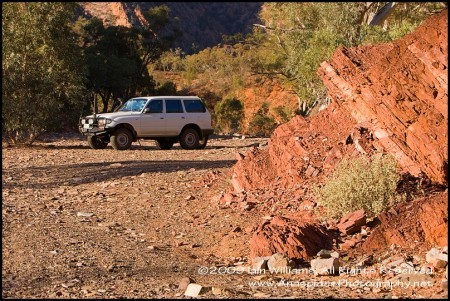Wyperfeld National Park, Victoria
 Sunday, April 19, 2009 at 1:44PM
Sunday, April 19, 2009 at 1:44PM After visiting Hammond in the attempt to find some insulator bowls, but failing dismally to find any, I debated whether to return to a known Port Augusta location for birds or continue to an unknown conservation park called Black Rock Conservation Park.
I researched the net but could not mention about the park, so decided as I was in the district (well sort of) I would drive the 100 mile to check it out. After becoming lost on remote desert roads, I eventually found the park which had been gazetted to protect a a species of mallee tree. Unfortunately for me, bird life was nil - other than annoying birds I call "nats" that move around in large groups, make a lot of noise and push other birds away.
I then made an incorerct decision, deciding to head further south - I should have returned to Port August 150 mile north for a known bird location. Put off quite a bit that I had lost an afternoon and morning shoot at a known location, I camped the evening under a bridge before calling base to get some information on Wyperfield National Park.
Wyperfield is sort of on the way back to Melbourne and I had heard on the elusive "grapevine" that there were quite a few birds in the area, due to the recent wildfires that had been in Victoria (the birds had migrated to Wyperfield which was undamaged in the fires). So I'm transiting ASAP to this area to try and catch the evening and morning light. Tomorrow (Monday Australia time) I have to drive to Melbourne to catch the Spirit of Tasmania back to Tasmania (the convict island). Will I get there in time to work out a shooting location and catch the light - my time seems to always chasing the light.......
No Water
Seems that the water I was "told" was in the park is no longer there! Despite this the mulga scrub is very appealing and as I am the only person here - all the better.
Bird life is plentiful, despite there being no water in the several dry marshes and lakes. Galahs, white cockatoos, mulga parrots, ring-necked parrots, kites, tree creepers and emu to mention a few. Unfortunately, seeing birds and photographing birds are two different things. The location is so sparse that I need more than a night and a morning to get any decent images of birds from this area - maybe next time!
Owl
I did have one interesting sighting. I was focussed on a red capped robin when I noticed two eyes pearing at me from a hollow. As soon as I looked at the eyes, they quickly dissappeared down into the tree hollow like an elevator going to ground. I set up and waited, and waited, and waited. I waited for 2 hours and finally I saw the eyes again along with the telltail mouth of an owl. But, as soon as I depressed the shutter, the noise of the camera shutter truggering was enough to press the ground button and the eyes immediately disappeared again.
I was now out of time - so the eyes will have to wait until I return to photograph them.
 Drought,
Drought,  Victoria,
Victoria,  Wyperfeld National Park in
Wyperfeld National Park in  Victoria Australia
Victoria Australia 



